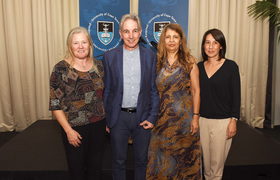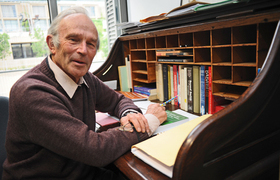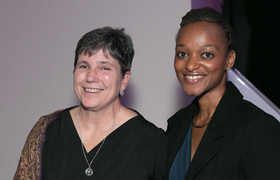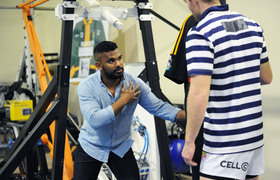Take the gap: A professor in training
05 June 2018 | Story Helen Swingler. Photo Robyn Walker. Read time 5 min.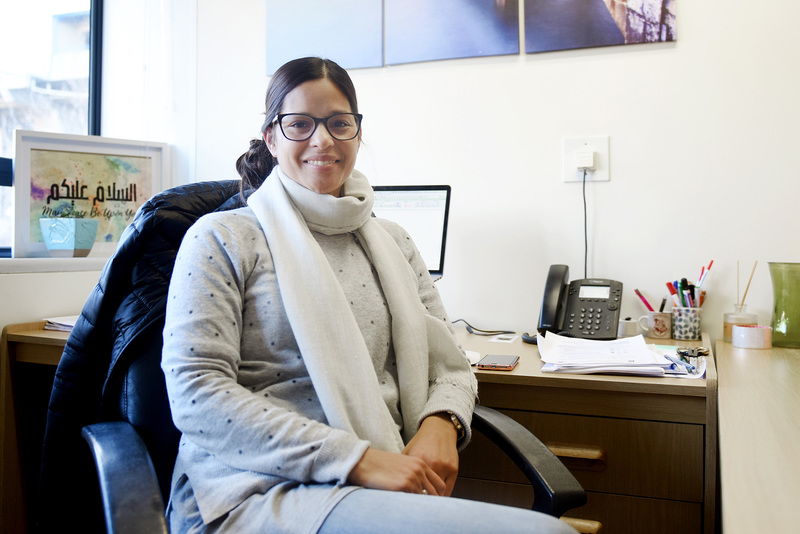
It was a TV interview with Tim Noakes that first introduced Livingstone high-schooler Yumna Albertus to the possibility of a vocation in sport and science. Now, with a PhD and postdoctoral studies in sports science under her belt, she’s in training for a bigger career goal thanks to the Next Generation Professoriate (NGP) initiative.
Launched in 2015, the initiative is part of the Recruitment, Development and Retention Programme to transform UCT’s academic staff, with a particular focus on black and female staff. It is led by director Dr Robert Morrell (Office of the Vice-Chancellor) and provides career progression planning and targeted support to mid-career academics such as Albertus, who turned a passion into a vocation at UCT’s Division of Exercise Science and Sports Medicine (ESSM).
At school, while the other girls sat in cliques at break, Albertus was on the volleyball court. (She would later captain the UCT A volleyball team.) By grade 11, and in love with science and biology, she was wondering what to do with her life.
After watching the TV interview with Noakes on the opening of the Sports Science Institute of South Africa, “something clicked”.
“But I had no idea how to get there, except that I needed a BSc degree.”
She completed a BSc in physiology and zoology at UCT. But with only seven places offered on the highly subscribed BSc honours in exercise science and sports medicine, she doubted her chances.
ESSM’s Professor Malcolm Collins’s call sealed things. She was in.
Her master’s degree in the field was later upgraded to a PhD and was followed by postdoctoral studies.
Her research centred on the neuromuscular factors contributing to fatigue and pacing strategies in athletes and, latterly, on the effects of supervised exercise programmes on muscle activity in patients with chronic disease. For this she uses electromyography to measure muscle activity in patients with cardiovascular disease and spinal cord injury undergoing rehabilitation.
Therapy and beyond
She is now developing the only high-density electromyography system in Africa. This allows researchers and clinicians to perform non-invasive measurements of individual motor unit activity in the muscles of patients with severe spinal cord injuries after they have undergone a holistic, intensive ‘Therapy and Beyond’ rehabilitation programme. (A 2015 paper points out that spinal cord injuries in South Africa are almost three-and-a-half times the global incidence, due to the high number of car accidents and knife and bullet injuries.)
“Albertus was invited by the Walking for Brandon Foundation to perform research using the Ekso suit, an anthropomorphic mobile exoskeleton.”
Albertus was invited by the Walking for Brandon Foundation to perform research using the Ekso suit, an anthropomorphic mobile exoskeleton that moves the patient’s lower extremity joints through the ranges to produce the gait of an able-bodied person. This brought up the question: Does this technology and innovation improve the patient’s well-being and overall functional ability, or is exercise-based therapy (the gold standard) better?
The question is important, given the limited facilities available to patients after injury.
“There are no facilities for spinal cord injury rehab after stabilisation,” she says. “Patients are sent to outpatient rehabilitation and taught to become physically functional and independent. Nothing more is implemented to improve their strength, functional capacity and well-being. We therefore need to show the impact of post-discharge rehabilitation.”
Albertus is now heading a multidisciplinary team from UCT, the Cape Peninsula University of Technology and Stellenbosch University.
“Patients [in the study cohort] gave unbelievable feedback and their progress showed something is working. These are exciting times.”
But with a full programme of research and supervising she felt she was neglecting her career.
“I felt overwhelmed – I take being a supervisor very seriously – stuck, drowning, needing guidance, mentoring and space.”
When the NGP programme called for applications, she put up her hand.
Career map
Each of the four new NGP recruits has been guided through a mapping process, with timelines and annual milestones, following the ad hominem promotions guidelines and requirements closely: a path from senior lecturer to associate professor to professor.
“I know where and what to work on, which provides more focus.”
“I know where and what to work on, which provides more focus.”
Morrell is guide and mentor.
“You can get so lost in the process [of being an academic]. The NGP team helps you deconstruct it. They also help get the balance right, which is vital, especially in the climate at the university right now. We are all overworked.”
At the time of writing, Albertus was looking forward to “escaping to the writing room” – a week-long writing retreat for NGP candidates.
She hopes to have the results of her research analysis ready by October. After that she begins writing up her results, keenly anticipated.
“It’s the largest spinal cord injury programme in Africa and certainly ‘up there’ with work done by international groups,” she says.
 This work is licensed under a Creative Commons Attribution-NoDerivatives 4.0 International License.
This work is licensed under a Creative Commons Attribution-NoDerivatives 4.0 International License.
Please view the republishing articles page for more information.







